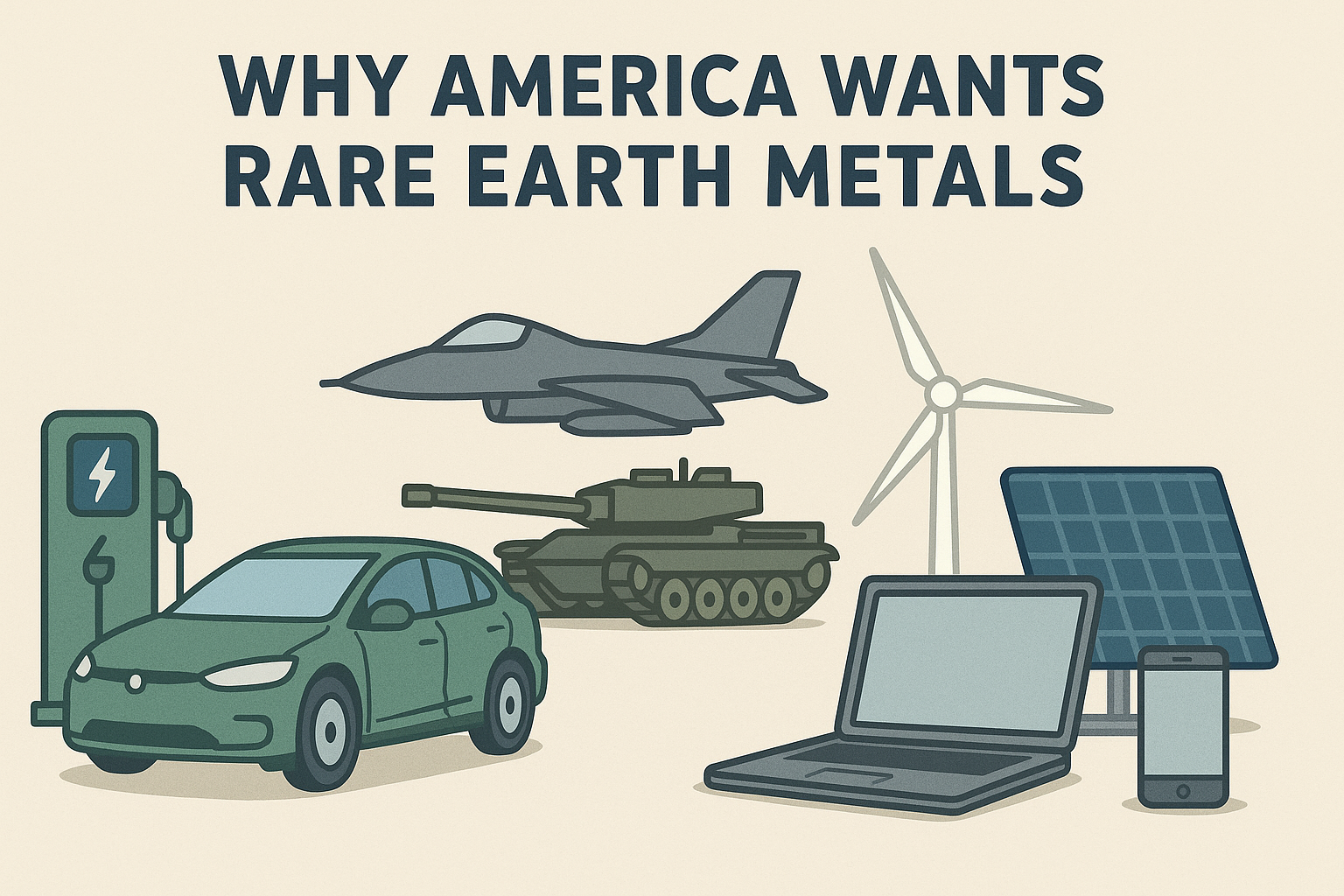
In recent years, the spotlight has increasingly turned toward a group of 17 obscure elements known as rare earth metals. Despite their name, rare earths are actually relatively abundant in the Earth’s crust, but economically viable concentrations are much harder to find—and even harder to process. For the United States, these metals are not just strategic commodities, but foundational building blocks for advanced technologies, clean energy, and national security. As global competition intensifies and the world shifts toward new energy and defense paradigms, understanding why America wants rare earth metals has become more urgent than ever.
The Building Blocks of Modern Technology
Rare earth elements, including neodymium, dysprosium, terbium, and lanthanum, play irreplaceable roles in modern technology. They are essential components in everything from smartphones, computer hard drives, and electric vehicle motors, to wind turbines, medical imaging devices, and advanced military hardware. For instance, neodymium and dysprosium are crucial for producing high-strength permanent magnets, a core technology in electric motors and generators. Without these magnets, the energy efficiency and miniaturization that power today’s devices would not be possible.
The Clean Energy Transition
The drive toward green energy is a major factor behind America’s rare earth ambitions. Wind turbines and electric vehicles (EVs) require rare earth magnets for their motors. As the nation aims to decarbonize its grid and transportation networks, demand for these metals is forecast to soar. The International Energy Agency projects that global demand for rare earths could increase threefold by 2040 under aggressive clean energy scenarios. For the U.S., ensuring reliable access to these inputs is vital to achieving renewable energy goals and maintaining technological leadership in the green economy.
Defense and National Security Concerns
Beyond clean energy, rare earths are central to the defense sector. They are used in guidance systems, precision munitions, fighter jet engines, missile defense systems, and a host of other military applications. The Department of Defense classifies many rare earths as critical minerals, given their importance for national security. Without secure supplies, the U.S. risks vulnerabilities in its defense industrial base.
Supply Chain Vulnerability: China’s Dominance
The biggest concern for U.S. policymakers is supply chain security. Today, China dominates the global rare earth market, accounting for over 60% of global production and an even higher share of processing capacity. This near-monopoly means that the U.S. and its allies are vulnerable to supply disruptions, price manipulation, or export controls stemming from geopolitical tensions.
The lessons of past disruptions are still fresh. In 2010, for example, China cut rare earth exports to Japan amid a diplomatic dispute, sending shockwaves through global supply chains. Since then, the U.S. has grown acutely aware of the risks posed by heavy dependence on a single foreign supplier for such critical materials.
American Response: Reshoring and Investment
To reduce these vulnerabilities, America has taken significant steps to reshore rare earth production and develop domestic supply chains. Federal investment, tax incentives, and public-private partnerships are driving the resurgence of rare earth mining and processing within U.S. borders.
A leading example is MP Materials (NYSE:MP), which operates the Mountain Pass mine in California—the only active rare earth mining and processing site in the United States. This facility is being expanded with government support to cover more of the rare earth supply chain, from extraction to magnet manufacturing. In addition, the U.S. Department of Defense and Department of Energy have both committed substantial funding to boost research, recycling, and alternative processing technologies.
Strategic Alliances and International Cooperation
Beyond domestic efforts, America is also strengthening alliances with trusted partners like Australia, Canada, and the European Union. These alliances focus on developing secure and diversified global supply chains for rare earth elements, as well as establishing transparent and sustainable sourcing standards.
Innovation and Recycling
Research and innovation are pivotal to the U.S. rare earth strategy. Investment is flowing into recycling rare earths from used electronics, magnets, and batteries—helping to reduce reliance on primary mining and minimize environmental impacts. Additionally, new extraction and separation technologies are being developed to make U.S. production cleaner and more competitive.
Economic Opportunity and Job Creation
The push for rare earth independence is also viewed as a source of economic growth and job creation, especially in mining, manufacturing, and advanced materials sectors. As demand grows, companies involved in the rare earths value chain are likely to see substantial opportunities for expansion and innovation.
The Road Ahead: Challenges and Opportunities
While America’s ambitions are clear, challenges remain. Domestic production must overcome higher costs, permitting hurdles, and environmental concerns compared to overseas competitors. Developing new processing facilities takes years and significant capital. However, bipartisan consensus is growing around the importance of rare earth security—not just for economic competitiveness, but for national resilience.
In the end, America’s push for rare earth metals is about securing the essential inputs that will power the next era of innovation, sustainability, and security. The stakes are high, and success will require a coordinated national effort combining investment, innovation, and international collaboration.
Disclaimer: This article is for informational purposes only and does not constitute investment advice or an offer to buy or sell any securities. Always conduct your own research and consult with a qualified financial advisor before making investment decisions.
